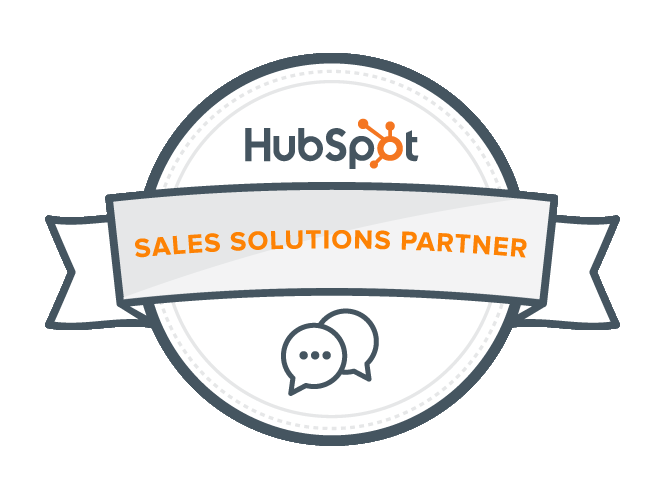The short answer is... you need to know YOUR marketing message. We aren't talking about taglines or gimmicks. No, it's about genuinely understanding whom you want to work with. Whom you want to buy from you, and how you want to serve them.
Here's a Market Exercise that will help you know your marketing message, and it starts with understanding your ideal customer/client.
THE TARGET
download the handout to follow along with the exercise.
The most challenging concept for entrepreneurs is understanding that "not everyone is your customer." We are wired for opportunity. Our natural reaction is, "but they could be if." Our ability as entrepreneurs to add if to any statement makes us successful.
Targeting everyone is also what makes our marketing generic and uninspiring.
People want their products and services to look like them, reflect them, and be like them. You can't be unique and say, we're for everyone in the same breath. Not only is this ineffective, but you lose trust and credibility.
So, now what? - define your target.
Ask yourself, "Who is your perfect client/customer... gender, generation, job, income, etc." You might be wondering why this is important. Well, understanding your target demographics helps you target your ads better. It also enables you to pick better pictures, create better videos, and write better posts. We are wired to want to connect with people like us. If you are a young family buying a house, you want to see a young family buying a home.
Look at your handout or a blank piece of paper.
Close your eyes and picture the best client or customer you ever had. Why are they so fantastic? Did they tell their friends about you? Did they appreciate you and what you do? Were they excited by the results? Hold that image and that name in your mind.
Now. Write their name at the top of the paper.
Write down their:
- Gender:
- Age:
- Married? Yes or No
- Kids? Yes or No
- Income?
- Employment:
Again, you can use this for specific targeting in some apps, but the most important thing is your content should reflect this person. If you are marketing mommy and me yoga, you don't want a picture of a 20-something night on the town.
Now, ask yourself, "where are they... geographically, spending time online, socially, etc." Understanding "where they are" helps you understand where your marketing should be. If you are marketing tutoring to young children, a banner in the car line at an elementary is a great idea. PTA flyers and email blasts could be part of your marketing mix. Don't just default to typical media and social media outlets. Think about where they are and where you can be.
Now. Look a the name at the top of your handout. Picture your best customer/client in your mind. Use your imagination because you might not have all the answers, but imagine where this person might be.
Write down where:
- They live:
- They work:
- Their online tendencies (social media, groups, websites they like):
- What affiliations they have (sports, elks club, groups):
- Their social habits:
Again, you can use where they are to determine where you market. If you target families, you can set up your Facebook ads to run only on Saturdays within a 1-mile radius around a local soccer field. Or you can sponsor a soccer tournament and get a banner or some print advertising.
You can see how defining your target builds upon itself.
You now know who your target is and where your target is. Next, we need to define what they are.
Ask yourself, "What makes them unique... their values, goals, desires, hobbies, etc." Understanding who they are helps you craft your message. What makes them unique is at the heart of your marketing and any marketing. You will let people know how your product or service can help them live a better life.
For example, "Wasting 2 hours on your lawn? Rather be with the family? Try our lawn services."
Notice the conflict? The potential customer values time with the family, but they choose to work on their lawn instead. They can do better, and lawn services is the solution. Lawn services resolves the conflict.
Look a the name at the top of your handout. Picture your best customer/client in your mind. Use your imagination because you might not have all the answers, but you can imagine what they are.
This can be the toughest part of the exercise. Remember, psychology is far from a perfect science, and you are just trying to get an idea of what your target is so you can put together better content for them. There is no right or wrong answer to this exercise.
Write down:
- Their values:
- Their desires:
- Their goals:
- Their interests:
- Their hobbies:
- Their life choices:
Which brings us to our last box on the first page of the handout, "where is the pain/the trigger?" Understanding the pain/the trigger helps you get people to pay attention. We are naturally wired to figure out how to avoid pain or elevate pain. It is a survival response in the amygdala, a part of our brain that controls stress and fight or flight responses. It is also a part of the limbic system that relays feelings. And when you make someone feel something, they are more likely to take action.
Again, Look a the name at the top of your handout. Picture your best customer/client in your mind. What brought them to you? What problem were they trying to solve? What was their goal? What did they want the future to look like? Even if it is something as simple as... "I called because my outlet stopped working, I heard a buzzing sound, I was worried about the electricity, so I called an electrician." The person still has values that are affected by their decision. They value their family and possessions. They are afraid of an electrical fire, and they need a service. Even the most straightforward purchasing decisions runs through the cycle of 1) a person 2) a value/desire/goal 3) a pain/trigger.
Write down the pain points or the triggers that lead to buying:
After completing the front page of the handout, you should have a good idea of your target. However, you may look at this tomorrow and want to revise it.
Please do! Marketing is a strange dichotomy of being flexible and fluid with the market but staying consistent with your customer/client. In other words, when the market moves, so should you. And, your clients/customers crave consistency, so be consistent.
Flip the handout over to the second page. It is time to work on your message.
Your Marketing Message
Defining your three uniques helps you differentiate your business from your competitors. The three uniques should also bring meaning and purpose to your company. Simon Sinek describes this as finding your WHY–watch his full TED talk here. Your 3 uniques should inspire you, inspire the people around you to contribute, and most importantly inspire your customers/clients to buy from you.
Write down your three uniques. Always revisit them. They should be more than words to you.
Now that you know why you do what you do, it is time to talk about how you do what you do. Write out 3 to 7 steps that you take to deliver your product or service to your customers/clients.
The proven process should be specific enough that someone gets a general idea of what you do. However, this is not a procedures book. This isn't a DIY situation. You want your proven process to make it easier to talk about what you do. The proven process keeps your message consistent, and best of all, a document proven process helps your entire company convey a consistent message from marketing to operations.
On your handout, write down your proven process.
The last step in the exercise is writing out your promise. Your promise should also be your customers/clients' goals, desires, and values. It should resolve any pain. Your promise should be the call to action on the majority of your content marketing assets. Finally, your promise should align with your target, your uniqueness, and your proven process.
I am Justin Babcock founder of Web Education Services. We help entrepreneurs and small business owners with DIY Marketing Support
Web Education Services lives to be the marketing folks you can call. We simplify your marketing and help you create a DIY marking process that works for you. We do this by organizing your marketing efforts, developing your marketing message, teaching you DIY marketing skills, and involving you throughout the process.
We promise to simplify your marketing through DIY marketing support.
If you are interested in learning more about our 3-week DIY marketing accelerator, our 13-week DIY marketing launchpad, or our website design and development options. Please call or text
(727) 222-6984.







